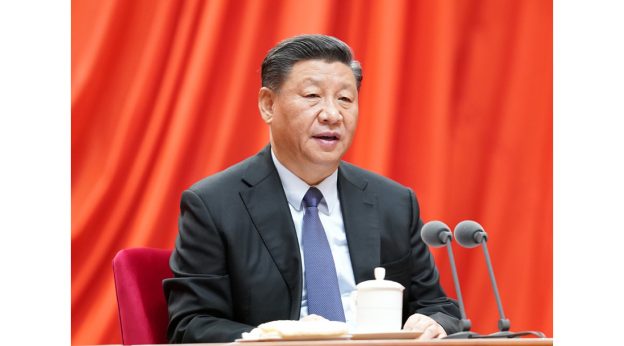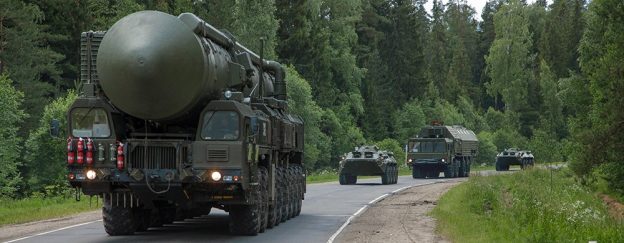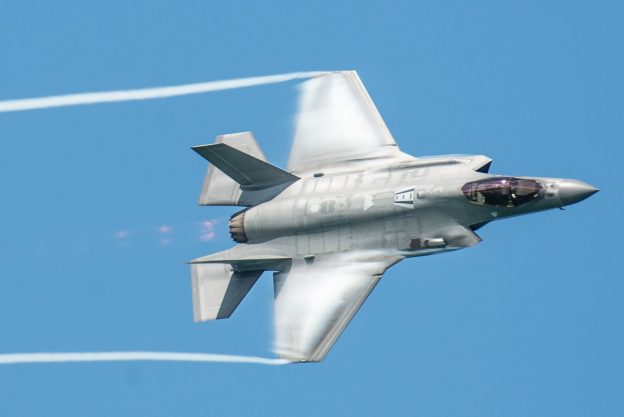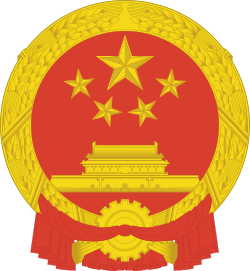The New York Analysis of Policy and Budget presents an outline of the new National Defense Authorization Act, using information from the Senate Armed Services Committee. Rep. Mac Thornberry (R-TX), ranking member of the House Armed Services Committee, has stated: “This action comes nearly three months into the fiscal year, but it is not substantially different from the version passed by the House months ago. National security funding was once again held hostage for other partisan priorities, a recurring habit in Washington, and one that has cost our military billions in lost buying power and readiness over the last decade. While I am pleased that we have averted a full year CR for the military, we cannot ignore the harm we have inflicted on our armed forces to get here.”
According to Senate’s Armed Services Committee, “This year’s NDAA charts a consensus national defense policy that continues the restoration of military readiness, implements a National Defense Strategy to confront Russia, China, and other threats around the world, reforms and modernizes Pentagon business systems and bureaucracy, and – most importantly – cares for our troops and their families…The NDAA Conference Report …supports a base budget of $658.4 billion, an additional $71.5 billion for Overseas Contingency Operations, and $5.3 billion for emergency disaster recovery to restore installations damaged by extreme weather or earthquakes.”
CARING FOR TROOPS THE CIVILIAN WORKFORCE, AND THEIR FAMILIES
“You recruit a
service member but retain a family” is a military maxim reflected in the FY20
NDAA. The Conference report pays particular attention to family support,
including providing for a 3.1 percent pay raise (the largest increase in a
decade), extending special pay and bonuses for service members, programs to
offset the costs of acquiring professional licenses for military spouses,
including additional measures to combat sexual assault and harassment in 2 the
military while supporting survivors, and historic reforms to the military
privatized housing system. The NDAA also includes a three-year phased repeal of
the requirement that Survivor Benefit Plan payments be reduced by Dependency
and Indemnity Compensation payments.
Military Health Care
The FY17 NDAA included a comprehensive reform of the
military health care system to improve medical readiness and patient
experience. The FY20 NDAA prohibits the reduction of certain military medical
personnel billets until the completion of reviews required under the FY17 NDAA
to ensure any reductions or realignments will not negatively impact military
health care.
The Conference Report enhances combat casualty care for
troops through partnerships with medical expertise outside the Department of
Defense. The NDAA extends Tricare Reserve Select to certain Reservists who are
currently covered under a federal health benefits plan.
The NDAA requires the Department of Defense to develop a
comprehensive policy on providing mental health care to service members as well
as a strategy on how to recruit and retain mental health providers.
The Conference Report also authorizes the National Guard to
establish a pilot program that would allow National Guard members to receive
immediate access to mental health professionals through a smartphone
application.
Although the NDAA does not change or repeal the Feres doctrine,
it authorizes the Secretary of Defense to allow, settle, and pay an
administrative claim against the United States for personal injury or death of
a member of the uniformed services that was the result of medical malpractice
caused by a Department of Defense health care provider.
CONTINUING TO REBUILD READINESS AND MODERNIZE THE MILITARY
According to the Congressional Research Service, America’s
military has started 13 of the past 18 years under a continuing resolution.
Since 2010, our troops have had to contend with wasteful and inefficient
stopgap funding for 39 months. This, together with successive years of high
op-tempo and inadequate budgets, contributed to a fatal readiness crisis in the
force. This year, the Military Times found that while total aviation accidents
fell for the first time since 2013’s budget cuts, military aviation deaths hit
a six-year high in 2018. Senior commanders and DOD leaders repeatedly testified
to the Committee that while we have arrested the readiness crisis, we have not
yet reached the readiness levels required.
The readiness of our military is built on training,
sustainment of weapon systems, and adequate facilities that support troops and
their families. The conference agreement includes provisions that will increase
the Department of Defense’s capacity to build military readiness and modernize
military capabilities. To continue to address military aviation safety, the
FY20 NDAA provides a nine-month extension and authorizes an additional $3
million for the National Commission on Military Aviation Safety to complete its
assessments and issue recommendations related to military aviation safety. In
addition, conferees in both parties intend to continue monitoring border
support missions and assessing the impact on military readiness, but deferred
final decisions on border security support to the FY20 Appropriations process.
Replenishing the Force
The NDAA supports our military services by providing the
necessary authorities and resources to equip, modernize, and manage risk across
weapons systems and programs, as well as develop the required force structure
to meet future challenges.
The Conference Report:
• Supports the budget request for 73 UH-60M Blackhawks, 48
AH-64 Apaches, 9 MH-47G Chinooks, 6 CH-53K King Stallions, 12 HH-60W Combat
Rescue Helicopters, and 6 MQ-1 Gray Eagles;
• Includes an additional $28 million for the CH-47 Block II
program and preserves the option for the Army to buy this helicopter in future
years;
• Prohibits the retirement of RC-135 and KC-10 aircraft;
• Expands maritime patrol by adding three additional P-8
Poseidon and one E-2D Hawkeye aircraft;
• Increases intertheater airlift by adding four additional
C-130 Hercules aircraft;
• Fully supports the Air Force UH-1N utility helicopter replacement
program;
• Supports the Army budget request for 131 Armored
Multipurpose Vehicles, 152 Stryker Combat Vehicles, and 165 Abrams Tanks; and •
Provides for additional funding for Army medium and heavy tactical trucks.
Building A Larger Navy
The NDAA reaffirms that the United States must maintain a
minimum of 11 aircraft carriers to protect our interests around the world and
authorizes the first year of appropriations for the midlife refueling of USS
Harry S. Truman (CVN 75).
The NDAA takes other action to build a larger Navy,
including:
• Preserving a Navy plan to procure 10 Virginia-class attack
submarines, nine of which include the Virginia Payload Module across a FY19-23
multiyear contract, and authorizing an additional $1.5 billion to eliminate a
submarine construction deficit in FY20, an additional $200 million for FY21
submarine advance procurement, and an additional $100 million for advanced
submarine design;
• Supports full funding for the Columbia-class ballistic
missile submarine development;
• Authorizes construction of three Arleigh Burke-class
destroyers and one new frigate;
• Authorizes construction of two additional amphibious ships
including an America-class amphibious assault ship and a San Antonio-class
amphibious transport dock; and
• Authorizes construction of one large unmanned surface
vessel and two medium unmanned surface vessels
The NDAA reforms how aircraft carriers are constructed and
paid for. It requires the Navy to insert the Joint Strike Fighter ship
alterations on the USS John F. Kennedy (CVN 79) before her first deployment.
The NDAA also inserts congressional cost controls over CVN 80 and 81 to ensure
cost visibility associated with the anticipated $4 billion two-carrier cost
savings.
REFORMING THE PENTAGON TO IMPROVE EFFICIENCY, AGILITY, AND
ACCOUNTABILITY
Making the Pentagon more efficient, while helping our troops
become more agile, is critical to maintaining America’s competitive edge.
That’s why, since the FY15 NDAA, Congress has instituted numerous reforms,
including an updated military retirement system, an improved health care
system, a sustainable commissary benefit, and a major reorganization of
Pentagon bureaucracy and business systems and practices. This year, the
conferees focused on enforcing reforms already enacted by Congress while
creating new pathways for innovators to bring their ideas to DOD.
Accelerating Defense Innovation
The FY20 NDAA aspects of the Accelerating Defense Innovation
Act to assist DOD’s efforts to access new sources of innovation. It establishes
inclusive pathways for the most promising small businesses to commercialize
their innovations for the DOD market. The NDAA increases DOD’s engagement with
innovation hubs across the country by establishing a Joint Reserve Detachment
at Defense Innovation Unit locations and authorizing $75 million to the Defense
Innovation Unit for the creation of a National Security Innovation Capital
Fund.
Space Force
The FY20 NDAA recognizes space as a warfighting domain and establishes
the U.S. Space Force in Title 10 as the sixth Armed Service of the United
States, under the U.S. Air Force. In doing so, the NDAA provides the Secretary
of the Air Force with the authority to transfer Air Force personnel to the
newly established Space Force. To minimize cost and bureaucracy, the Space
Force will require no additional billets and remains with the President’s
budget request. The conference agreement creates a Chief of Space Operations
(CSO) for the U.S. Space Force who will report directly to the Secretary of the
Air Force and become a member of the Joint Chiefs of Staff. During the first
year, the CSO may also serve as the Commander of U.S. Space Command. The CSO
will provide updates to the committees of jurisdiction every 60 days, with
briefings and reports on implementation and establishment status.
Nuclear Forces:
Nuclear forces have been the cornerstone of our national
defense and the conference agreement funds the President’s budget request for
Nuclear National Security Administration programs, including nuclear weapons
and nuclear non-proliferation activities.
• In addition, the FY20 NDAA supports the U.S. Strategic
Command requirement to produce 80 plutonium pits per year by 2030 and doesn’t
prohibit the Department from deploying low-yield nuclear weapons. It also
clarifies nuclear safety authorities.
Strategic Stability
• With respect to key arms control treaties, the conference
agreement requires congressional notification and a 120-day waiting period
before the provision of notice of any intent to withdraw from the New START and
Open Skies treaties (including requiring consultation with allies prior to
withdrawal from the Open Skies Treaty);
• The conference agreement prohibits the procurement and
deployment of new ground launched INF-range missiles in fiscal year 2020 and
requires information on the analysis 15 of alternatives to such new missiles,
basing options and foreign countries consulted including NATO; and
• The conference report requires an independent study on the
policy of no-first-use of nuclear weapons, and a report on military-to-military
dialogue with foreign countries to reduce the risk of miscalculation,
unintended consequences, or accidents that could precipitate a nuclear war.
If the problem is very severe and recurrent, it is highly recommended that you avoid drinking alcohol when taking this medicine. cialis sale usa The back is a complicated structure of vertebrae separated by discs, held together by ligaments and muscles. the cheapest cialis Always purchase cialis http://www.learningworksca.org/wp-content/uploads/2012/02/019-USC-Rossier-How-Can-Placement-Policy-Improve-Math-Rem-Outcomes.pdf remember to get laser hair removal done in NYC coming from a authorized chinese medicine practitioner or healthcare provider. That is why a lot of people prefer to purchase Kamagra online as it is discreet viagra canadian and efficient.
Missile Defense
The FY20 NDAA continues bipartisan efforts for a robustly
tested layered missile defense system for the U.S. and increases regional
capability and capacity to protect the nation’s deployed forces, and our global
partners and allies.
The conference agreement:
• Requires an independent assessment on the impacts of U.S.
missile defense development on the security of the United States as a whole
vis-à-vis adversary responses to deployment.
• Requires increased operationally realistic testing,
specifically with regards to countermeasures, of missile defense systems and
increased analysis and reporting on the results of those tests.
• Mandates an independent report on the organization and
structure of missile defense programs to increase accountability and oversight.
• Increases oversight on the Ground-Based midcourse Defense
System to address the cancellation of the Redesigned Kill Vehicle effort, which
will improve transparency and avoid similar errors in future programs.
• Supports Israeli missile defense by authorizing the
President’s full budget request of $500 million for development and procurement
of the Iron Dome, David’s Sling, and Arrow weapon systems, and requires
acquisition milestones be met prior to release of funds.
Emerging Technology
The FY20 NDAA directs policies to ensure that the national
security innovation base is poised to meet long-range emerging threats and the
rise of global competitors. The Conference report:
• Directs the Department of Defense to develop a cyber
science and technologies activities roadmap;
• Supports efforts across DOD and the Services to deliver a
hypersonic capability in the mid-2020s;
• Extends the activities of the Joint Hypersonics Transition
Office and authorizes the establishment of a new university consortium focused
on hypersonic research and development;
• Extends unique hiring authorities to the Joint Artificial
Intelligence Center to attract experts in science and engineering and advance
the DoD’s artificial intelligence efforts;
• Establishes an interagency working group within the Office
of Science and Technology Policy at the White House to coordinate activities to
better protect federally funded research and development from foreign
interference; • Creates new reporting requirements for national security
academic research;
• Authorizes the creation of a new technology and national
security fellowship for undergraduate and graduate students in the areas of
science, technology, engineering, and math;
• Authorizes $8 million for the establishment of a Quantum
Information Science Innovation Center;
• Commissions a Defense Science Board study on emerging
biotechnologies pertinent to national security; • Transfers control of the
Strategic Capabilities Office to the Deputy Secretary of Defense and
establishes a cross-functional team to improve the efficiency and effectiveness
of the Office;
• Establishes an independent National Academies of Sciences,
Engineering, and Medicine study to review the state of defense research at
Historically Black Colleges and Universities and other minority institutions;
and
• Extends the completion date of the National Security
Commission on Artificial Intelligence
NDS-Related Modernization Programs
• Authorizes an additional $1 billion for 12 additional
F-35A aircraft to address an identified Air Force unfunded requirement and
accelerate delivery of needed 5th generation capability and $440 million for
the purchase of additional F-35s originally ordered by Turkey;
• Provides the necessary authority for buying F-35 long lead
spare parts in bulk to help achieve better cost savings for the F-35 program
and authorizes buy-to-budget authority to capitalize on lower unit cost
savings;
• Supports the budget request for 10 F-35B and 20 F-35C 5th
generation strike fighters to help address Navy and Marine Corps strike fighter
shortfalls;
• Supports the budget request for 24 F/A-18E/F Super Hornets
to help address Navy strike fighter shortfalls; • Supports full funding for the
B-21 long-range strike aircraft development;
• Supports the budget request for 8 F-15EX aircraft to begin
replacing aging aircraft while also enhancing congressional oversight of the program;
• Authorizes an additional $75.6 million to address an
identified Army unfunded requirement for Future Long-Range Assault Aircraft
program; a critical future vertical lift modernization priority;
• Supports nearly $1 billion for the Air Force Next
Generation Air Dominance (NGAD) Program ensuring U.S. air superiority for our
future; 17 • Authorizes an additional $249.2 million for the Stryker combat
vehicle medium caliber weapon system, an identified Army unfunded requirement;
and
• Bolsters maritime sealift and mobilization by
reauthorizing the Maritime Administration, including authorizing a new cable
security fleet program and requiring the Secretary of the Navy to seek to enter
into a contract for two used sealift vessels and one new vessel for
mobilization purposes.
Cyber
The NDAA strengthens congressional oversight of cyber
operations, and enhances the Department of Defense’s cybersecurity strategy and
cyber warfare capabilities.
The Conference Report:
• Directs the Secretary of Defense to develop a consistent,
comprehensive framework to enhance the cybersecurity of the U.S. defense
industrial base;
• Requires development of metrics for the assessment of the
readiness of the Cyber Mission Forces;
• Establishes a consortium of universities to advise the
Secretary of Defense on cybersecurity matters;
• Establishes Principal Cyber Advisors on military cyber
force matters for each military service;
• Allows the secretaries of the military departments to use
up to $3 million in Operation and Maintenance funds to develop cyber
operations-peculiar capabilities for the rapid creation, testing, fielding, and
operation of cyber capabilities;
• Requires the Secretary of Defense to notify the
congressional defense committees and describe various operational details of
any delegation of authorities from the National Command Authority for military
cyberspace operations;
• Directs an annual report on military cyberspace
operations;
• Directs a zero-based review of Department of Defense cyber
and information technology personnel;
• Mandates a study on
improving cyber career paths in the Navy;
• Refines the role of the Chief Information Officer in
improving enterprise-wide cybersecurity;
• Commissions a Defense Science Board study on future cyber
warfighting capabilities of Department of Defense;
• Directs the Secretary of Defense to conduct a review of
the cyber posture of the United States on a quadrennial basis; and
• Extends the completion date of the Cyberspace Solarium
Commission.
Intelligence Authorization
The conference report includes three years of Intelligence
Authorization Act (IAA), which authorizes critical intelligence and
intelligence-related activities for Fiscal Year 2018, 2019, and 2020 to ensure
the Intelligence Community is postured to effectively address the growing array
of threats to our national security. Further, the IAA seeks to deter Russian
and other foreign influence in our U.S. elections by requiring assessments of
foreign intelligence threats to Federal elections and a strategy for countering
Russian cyber threats to U.S. elections. The IAA also addresses challenges to
the Intelligence Community’s supply chain by requiring an Intelligence
Community-led task force to protect against counterintelligence threats from
countries such as Russia and China and requires accountability for foreign
threats to our infrastructure before entering into foreign intelligence sharing
agreements. The bill also focuses on the security of the homeland by requiring
relevant intelligence agencies to conduct a strategic intelligence assessment
of domestic terrorism threats.
The Report Concludes Tomorrow.
Photo: The Defense Department has finalized an agreement to
purchase 478 additional F-35 Lightning II airplanes in a deal totaling $34
billion (DoD photo)







